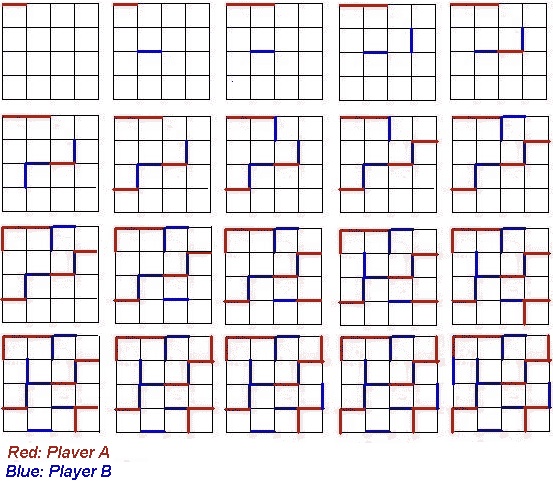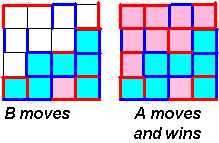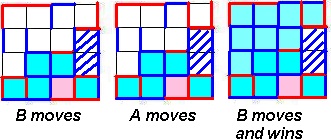Dots and boxes is a two-person game based on a rectangular lattice of points. Each player, in turn, draws a horizontal or vertical line connecting two adjacent points.
Whenever placement of a line complete a single square, the square is colored in, the player scores
one point, and the player having completed the square receives an additional move.

In the first part of the game, the players will avoid adding the third side of a square.

As soon as this is no longer possible, the player () who makes the next move will enable his opponent
to form a sequence of squares, called a chain. Player
will end his move by adding a segment
which does not close any square and possibly opens a new chain to
.

The best move is not necessarily the one closing as many squares as possible and opening the shortest chain to the opponent.

Sometimes it is more convenient to force the other player to open a chain that it is longer than the one currently available. This can be achieved, for example, by completing all but two squares of the available chain and forming a rectangle (a so-called domino) out of the last two.
The winning strategies of this game are very complex and have not yet been completely classified. In 2001, David Wilson showed the game is a win for the second player.